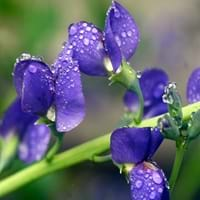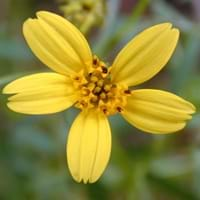Life Span
Perennial
Annual
Type
Shrub
Flowering Plants
Origin
North America, United States, North-Central United States, Central United States, Canada
Mexico, Central America, South America
Types
Blue False Indigo
White False Indigo
Not available
Number of Varieties
Not Available
Habitat
gardens, Grassland, Warmer regions
Cultivated Beds
USDA Hardiness Zone
2-8
8-11
Sunset Zone
A1, A2, A3, 1a, 1b, 2a, 2b, 3a, 3b, 4, 5, 6, 7, 8, 9
A1, A2, A3, H1, H2, 1a, 1b, 2a, 2b, 3a, 3b, 4, 5, 6, 7, 8, 9, 10, 11, 12, 13, 14, 15, 16, 17, 18, 19, 20, 21, 22, 23, 24
Habit
Oval or Rounded
Cushion/Mound-forming
Flower Color
Purple
Yellow, Orange, Gold, Orange Red
Flower Color Modifier
Not Available
Bicolor
Fruit Color
Light Green
Not Available
Leaf Color in Spring
Light Green, Gray Green, Gray
Green
Leaf Color in Summer
Light Green, Gray Green, Gray
Green
Leaf Color in Fall
Light Green, Gray Green, Gray
Green
Leaf Color in Winter
Not Available
Light Green
Plant Season
Summer, Fall
Spring, Summer, Fall
Sunlight
Full Sun, Partial Sun, Partial shade
Full Sun, Partial Sun
Type of Soil
Loam, Sand
Loam, Sand
The pH of Soil
Neutral, Alkaline
Acidic, Neutral
Soil Drainage
Well drained
Well drained
Bloom Time
Summer, Late Summer, Early Fall
Indeterminate
Tolerances
Drought
Drought
Where to Plant?
Ground, Pot
Ground
How to Plant?
Seedlings, Stem Planting
Divison, Layering, Stem Cutting
Plant Maintenance
Medium
Medium
Watering Requirements
Average Water Needs
Requires regular watering
In Summer
Lots of watering
Lots of watering
In Spring
Moderate
Moderate
In Winter
Average Water
Average Water
Soil pH
Neutral, Alkaline
Slightly Acidic
Soil Type
Loam, Sand
Sandy
Soil Drainage Capacity
Well drained
Well drained
Sun Exposure
Full Sun, Partial Sun, Partial shade
Part sun
Pruning
Remove damaged leaves, Remove dead branches, Remove dead leaves
Remove damaged leaves, Remove dead branches, Remove dead leaves
Fertilizers
All-Purpose Liquid Fertilizer
All-Purpose Liquid Fertilizer
Pests and Diseases
Red blotch
Red blotch
Plant Tolerance
Drought
Drought
Flower Petal Number
Single
Single
Fragrant Bark/Stem
Yes
Yes
Foliage Texture
Fine
Fine
Foliage Sheen
Matte
Matte
Self-Sowing
Not Available
Yes
Attracts
Not Available
Butterflies
Allergy
Not Available
Not Available
Aesthetic Uses
Showy Purposes
Beautification, Decorating walls, Hanging Basket, Showy Purposes, Used as an interior landscaping species
Beauty Benefits
Not Available
Not Available
Environmental Uses
Air purification
Air purification, Food for birds
Medicinal Uses
Not Available
Cancer, Diarrhea, Hepatitis, Inflammation, Wounds
Part of Plant Used
Whole plant
Flowers
Other Uses
Used as Ornamental plant
Air freshner, Condiment, For making oil for cosmetics, Garland, Making Sweet Scented Oil, Medicinal oil, Used as an ointment, Used as Ornamental plant, Used for fragrance, Used for its medicinal properties, Used for Landscaping
Used As Indoor Plant
No
Insignificant
Used As Outdoor Plant
Yes
Yes
Garden Design
Foundation, Mixed Border, Rock Garden, Wall
Dried Flower, Landscape, Lawns and Turf
Botanical Name
AMORPHA canescens
TAGETES lucida
Common Name
False Indigo
Mexican Marigold, Sweetscented marigold
In Hindi
इंडिगो
मैक्सिकन गेंदा
In German
falsches Indigo
mexikanische Ringelblume
In French
faux Indigo
Tagetes lucida
In Spanish
Falso Indigo
caléndula mexicano
In Greek
Λάθος Indigo
μεξικάνικο κατιφέ
In Portuguese
false Indigo
Tagetes lucida
In Polish
fałsz Indigo
meksykański nagietka
In Latin
falsum indicum
Mexicanus caltha
Phylum
Magnoliophyta
Tracheophyta
Class
Not Available
Magnoliopsida
Family
Fabaceae
Asteraceae
Clade
Angiosperms, Eudicots, Rosids
Angiosperms, Asterids, Eudicots
Tribe
Not Available
Tageteae
Subfamily
Not Available
Asteroideae
Number of Species
Not Available
Not Available
Season and Care of False Indigo and Mexican Marigold
Season and care of False Indigo and Mexican Marigold is important to know. While considering everything about False Indigo and Mexican Marigold Care, growing season is an essential factor. False Indigo season is Summer and Fall and Mexican Marigold season is Summer and Fall. The type of soil for False Indigo is Loam, Sand and for Mexican Marigold is Loam, Sand while the PH of soil for False Indigo is Neutral, Alkaline and for Mexican Marigold is Acidic, Neutral.
False Indigo and Mexican Marigold Physical Information
False Indigo and Mexican Marigold physical information is very important for comparison. False Indigo height is 60.00 cm and width 120.00 cm whereas Mexican Marigold height is 30.50 cm and width 30.50 cm. The color specification of False Indigo and Mexican Marigold are as follows:
False Indigo flower color: Purple
False Indigo leaf color: Light Green, Gray Green and Gray
Mexican Marigold flower color: Yellow, Orange, Gold and Orange Red
- Mexican Marigold leaf color: Green
Care of False Indigo and Mexican Marigold
Care of False Indigo and Mexican Marigold include pruning, fertilizers, watering etc. False Indigo pruning is done Remove damaged leaves, Remove dead branches and Remove dead leaves and Mexican Marigold pruning is done Remove damaged leaves, Remove dead branches and Remove dead leaves. In summer False Indigo needs Lots of watering and in winter, it needs Average Water. Whereas, in summer Mexican Marigold needs Lots of watering and in winter, it needs Average Water.





